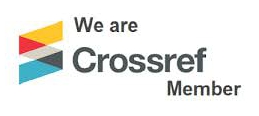Underwater Fish Attraction LED Lamp (UFAL) for Improving Aquaculture Productivity
Keywords:
fish- green LED lamp, aquaculture, fisheries, productivityAbstract
In 2014, SIRIM Berhad collaborated with a local SME to design and develop an Underwater Fish Attracting LED Lamp (UFAL). Based on a number of field studies in the open sea of Langkawi, Pulau Aman, and Kuala Muda, at northern Malaysia the green LED was found to be effective in attracting different species of fish. The light spectrum works by attracting planktons (zooplankton and phytoplankton) from the surface of the ocean to convene around it which in turn provides sustenance to the pelagic fishes. In the Malaysian aquaculture industry, the average mortality rate of fish larvae (above 3 months) after being released to a cage is around 50%. The dependency on commercial pellet and trash fish as the major components of the fish’s diet aggravates the situation as these options can be costly. The effectiveness of UFAL has been reflected in the physical and growth rate of seabass and grouper in an aquaculture site at Kuala Muda. After 10 months of its application, the green LED was proven to speed up the fish’s growth by 30-40 %, reducing the dependency on commercial food by 30 % and reducing the harvesting cycle by 20%. In addition, both species of the fish that thrived in cages with UFAL exhibited a lower mortality rate when compared to the control cages. This technology could offer an alternative prospect in the sea coastal aquaculture industry and help local SMEs to produce a reliable product to expand their business into new and niche markets. Based on the outcomes of this study, this promising technology could be the key to improve productivity in the sea coastal aquaculture industry.








